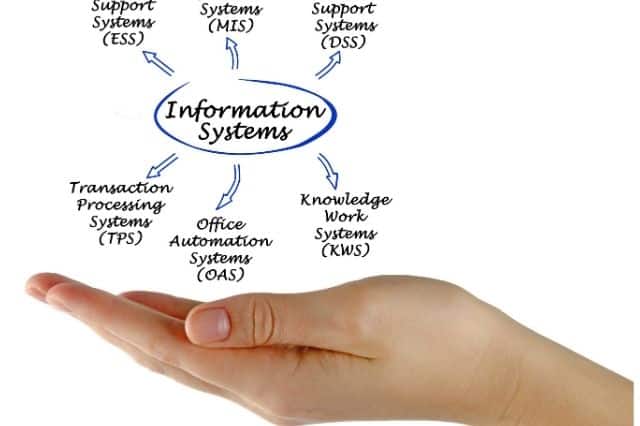Explain the Different Types of Planning in Mis
It produces information as a simulation of firms operation. In MIS the information is recognized as major resource likecapital and time.

Types Of Information System Mis Tps Dss Pyramid Diagram
Strategic Management - Used by executives handles unstructured data and includes the decision support system and executive support system.

. This article proposes a three-stage model for planning the Management Information System MIS. Some of the common types of Management Information Systems are process control systems human resource management systems sales and marketing systems inventory control systems office automation systems enterprise resource planning systems accounting and finance systems and management reporting systems. MIS - System Investigation Stages.
Therefore it forms a hierarchy. The three primary types of MIS infrastructure are supporting operations supporting change and supporting the environment. MIS - Customer Relationship Mgmt.
MIS infrastructure are the plans for how a company will build deploy use and share its data processes and MIS assets. Strategic planning is carried out by top-level management. The plan for development and its implementation is a basic necessity for MIS.
Planning is a pervasive function. The system utilizes computers manual procedures models for analysis planning control and decision making and a database Davis and Olson 1984. MIS - Decision Support System.
MIS - Four Stage Model. Its contents are used by software that produces report as well as mathematical model. MIS - Enterprise Resource Planning.
If this resource has to be managed well it calls upon themanagement to plan for it and control it so that the information becomesa vital resource for the system. MIS - Executive Support System. Strategic information is concerned with long term policy decisions that defines the objectives of a business and checks how well these objectives are met.
With the understanding of three kinds of process that take place in a business we can view the nature of information systems that support these processes. It means MIS should cater to the specific needs of managers in the hierarchy of an organization. MIS - Control Systems Types.
In other words the details on how hardware software network connectivity are supporting a companys business processes. The management information systemneeds good. Top-level management prepares higher-level plans whereas middle and first-line managers prepare lower-level plans.
Development of MIS MIS should be flexible interactive and progressive. This makes planning vital for MIS development. Transaction Processing SystemTPS Management Information SystemMIS and.
Operational plans ask how the organization will generally do something to accomplish the companys mission. MIS is a set of procedures which when executed provides information to support decision making. Steps Process Objectives Importance.
Long-term plans are drawn in this process spanning a number of years. MIS - Business Expert Systems. MIS - Problems in Implementing.
Decisions can be taken trade off uncertainty for certainty. MIS has to be responsive to changing information needs. A management information system MIS is an integrated user-machine system for providing information to support operations management and decision making functions in an organization.
We have three types of information system which satisfy the information needs of each level. MIS - Nolan Stage Model. A typical organization has six information systems with each supporting a specific organizational level.
For example acquiring a new plant a new. Types of Strategic Alternatives. Major Types of Information Systems.
The three stages are strategic MIS planning organizational information requirements analysis and resource allocation. This model clarifies many ill-defined issues of MIS planning. A fourth type of planning known as contingency planning is an alternative course of action.
MIS - Types of IS. Therefore lower level plans are consistent with higher-level plans. MIS - Stages of Development.
Based on Anthonys classification of Management information used in business for decision-making is generally categorized into three types. MIS - DSS Classification. These types of planning occur subsequently.
Operational planning facilitates tactical planning which in turn facilitates strategic planning. MIS - Business Continuity Planning. Outputs are used by persons who are responsible for solving the firms problems say managers.
MIS - Supply Chain Management. MIS - Content Management System. The three major types of planning are operational planning tactical planning and strategic planning.
The managers at different levels form different types of plans. MIS - Conceptual Design. Tactical planning is different from operational planning in that tactical plans ask specific questions about what needs to happen to accomplish a strategic goal.
The required design and development information is at different levels viz strategic planning management control and operational control. It produces both periodic and special report. Who Creates Plan in Organization.
4 Levels of Strategy. 6 7Management Decision Making. Components of MIS Model.
These systems include transaction processing systems TPS at the operational level office automation systems OAS and knowledge work systems KWS at the knowledge level management information systems MIS and decision. MIS - Business Intelligence System. Hierarchy of Planning.
There are three major types of planning which include operational tactical and strategic planning. Management Information System MIS is an integrated manmachine system for providing information to hold up the operations management and decision making functions in an organization. Tactical Management - Used by business unit managers handles semi-structured data and includes management information systems.

Business Management 4 Types Of Planning


Comments
Post a Comment